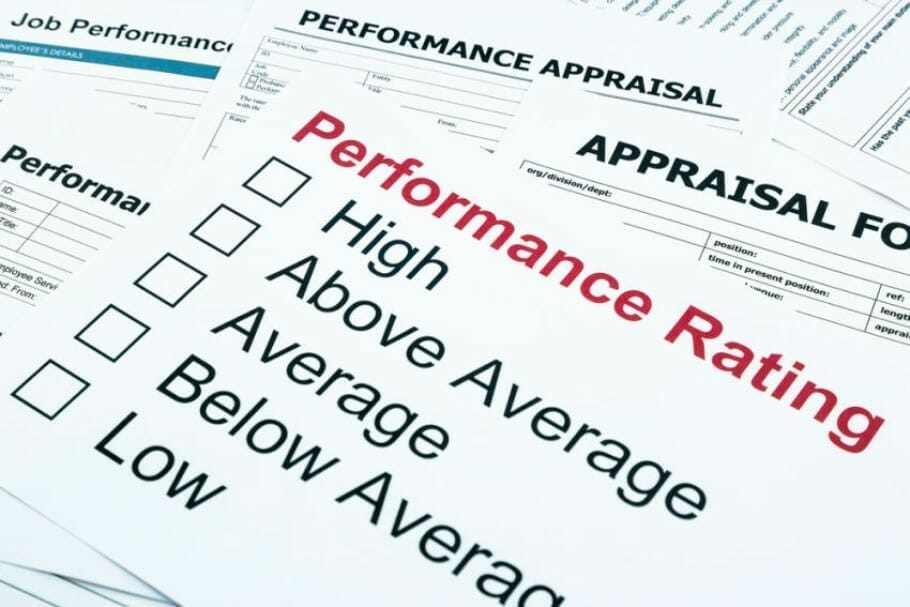Your shopping cart is currently empty!
For their successful, good life Information you really need: Government-funded publisher, awarded the Global Business Award as Publisher of the Year: Books, Magazine, eCourses, data-driven AI-Services. Print and online publications as well as the latest technology go hand in hand - with over 20 years of experience, partners like this Federal Ministry of Education, customers like Samsung, DELL, Telekom or universities. behind it Simone Janson, German Top 10 blogger, referenced in ARD, FAZ, ZEIT, WELT, Wikipedia.
Disclosure & copyrights: Here you will find the hand-picked book recommendations in cooperation with our partner Managementbuch.de on the topics of economics, business and non-fiction. The reviewers are Stephan Lamprecht, Christiane furrier, Wolfgang Hanfstein & Oliver Ibelshäuser. The books were made available free of charge by the publisher, image rights from the publisher.
The 5 best books on employee motivation & leadership: With positive thinking & error culture to corporate success {reading tip}
By Oliver Ibelshauser (More) • Stephen Lamprecht (More) • Last updated on October 06.03.2018, XNUMX • First published on 06.03.2018/XNUMX/XNUMX • So far 4926 readers, 1547 social media shares Likes & Reviews (5 / 5) • Read & write comments
What do successful companies do differently? Employee satisfaction is an important aspect - but what are the factors to achieve it? And what makes good Guide out?
- Sense and luck come before success
- Happiness for the project
- Lucky ones are 31 percent more productive
- Employee satisfaction as an investment
- ROI by happy employees
- Going to the brain of the employee: agile management
- Help for companies
- Recommendations for business
- Practice book on new paths
- A difficult relationship: low performer and leader
- If the reasons lie with the boss
- Reflect your own behavior
- Tips that are really workable
- Positive thinking as a manager: use the placebo effect
- Even for your own optimism
- From teams and employees
- The two standards of error culture
- Make better instead of blaming
- Causes of errors
- Anonymous message board for errors
- Tips and checklists
- DISG Typology for Executives
- The transparent employee?
- DISG in the leadership day
- Everyone is different. But some are similar.
- There is no good or bad
- 4 personality types at a glance
- Better motivation and resolve conflicts more quickly
- Let go of the leash or show hardness?
- Old schemata re-implemented
- Chefs who look through their employees perform better
- Top books on the subject
- Read text as PDF
- Advice on success, goal achievement or marketing
- Book eCourse on Demand
- Skate eBook as desired
Sense and luck come before success
Companies are increasingly looking for Methodsto her Employees to keep. An important aspect here: employee satisfaction.
But leads Success to happiness – or is being happy the prerequisite for success? An exciting question for everyone and also for the management floors.
Happiness for the project
If once again Projects is whipped, then we'll be happy to do it for sure exhilarating feeling of happiness that beckons at the end of a project. That would have to be Motivation enough for top performance, right? No.
A 2005 meta-study on the relationship between happiness and success at Harvard University shows it's the other way round.
Lucky ones are 31 percent more productive
The scientists Sonja Lyubomirsky, Laura King and Ed Diener evaluated 225 studies from the past 35 years, all of which show the happy People more successful are:
Happy people are 31 percent more productive, as well merchandise they are 37 percent more and are three times more creative. What applies to personal happiness also applies to the job. For more corporate success, employee satisfaction, the happiness of every individual, should become a management task.
Discounts for your success (advertising)!
Employee satisfaction as an investment
That and nothing less is what Arne Prieß and Sebastian Spörer demand in their guide With enthusiasm for top performance and success. Prieß describes himself as a deeply happy person.
His experiences as a coach and Training for Executives he combines in the guide with personal experiences: The result is a guide to staying happy in a dynamic Welt. He gives the reader valuable methods of time and Digital-Overload managements to the Hand, but the recommendations for action are also aimed at the management level itself.
ROI by happy employees
Because happy employees are a valuable asset and a Investment with a high ROI, because successful employees are what all companies want, says Prieß, the more successful the individual employees, the more successful the company as a whole.
In order to make employee satisfaction a lived value in the company, it has to be deeply integrated into the corporate culture.
Going to the brain of the employee: agile management
Slack time, pair working or bar camps: In the second part of the practical book, Spörer presents some agile management methods and happiness benefits. The trainer for executives has to focus on the topics Work-Life-Balance and health management and enriches the practice book immensely.
Spörer combines Prieß's recommendations for action in the Neuro-Agile Methods section: the latest findings on how to stay happy with the latest findings in neuroscience, which gives the advisor its innovative twist.
Help for companies
Help your employees in the puzzle of performance, advises Spörer, training can support the participants in using suitable tools and changing their lifestyle.
If companies practically apply the results of neurobiology and firmly anchor their methods in their corporate mission statement, nothing stands in the way of a sustained increase in employee satisfaction.
Recommendations for business
The book also explains how enthusiasm, top performance and success arise and provides instructions on how to stay happy in a dynamic world. It also deals with neuro-agile methods and the latest findings on how to stay happy.
Finally, recommendations for action for companies for top performance and success as well as a program for increase of performance.
Practice book on new paths
With enthusiasm for top performance and success is a practical book that breaks new ground. It clearly shows how important people and their need for meaningful work in the company are.
In view of the generational change, it is time to deal with the topic of happiness and employee satisfaction at manager level too. Prieß and Spörer give the starting signal.
A difficult relationship: low performer and leader
However, employee motivation is also a constant topic of discussion on Best of HR - Berufebilder.de®. How practical that Johanna and Martin wrote a book – which is now a bit older – that deals with how to get low-performing employees, so-called low performers, on board.
Employees who regularly perform less than their colleagues are a long-term burden for those around them and, above all, for their managers. No wonder many managers like such low performers whenever possible fast want to get rid of.
But how do managers behave when one of their employees clear does less than you would like him to do? Quit? further education? Johanna and Martin Fischer offer another interesting approach. Her Solution: Work on your relationship with each other! Surprisingly, the problem is often not at the competence level, but at the relationship level.
If the reasons lie with the boss
Bosses are quick to blame employees for poor performance. In doing so, they, the superiors, are often the cause of the so-called low performance themselves. For example, through unclear work instructions or bad ones overall Communication.
The two coaches Johanna and Martin Fischer advise and recommend to work with the affected employee on the common relationship rather than the (expensive) way of denunciation.
Reflect your own behavior
The two authors have a BusinessWrote a book that sounds a lot like a relationship guide. Analysis is the starting point. The authors clearly convey how the employee moves in a spiral of discouragement.
At this point you offer executives impulses, their own Behavior to question: What have I actually contributed to this situation? Problem solving: Changing your own behavior and becoming part of the problem solving process as a manager.
Tips that are really workable
The book is rich in instructions for exercises or training that use the Executive support in the development of his low-performer.
The well-founded Background of the experienced authors creates the necessary security to master even difficult conversational situations. At the end there is an employee who finds old or even new strength. An all-round successful book that is second to none. A vividly written guide that all leaders should read.
Positive thinking as a manager: use the placebo effect
Positive thinking is often and still ridiculed, but it is impressive how effective it is in various areas. Managers who deal with this also benefit from their leadership success.
The extent to which our attitudes to something affect is shown most impressively by the well-known placebo effect. And it is this effect that the authors want to transfer to management. That's why they spend the first few pages of their book on persuasion. They promise a significantly higher level of performance when the manager's attitude changes.
Even for your own optimism
That is why there is a comprehensive self-test for your own right at the beginning Optimism. Because of course a manager can only have a positive effect on the employees if they think positively themselves.
Already here, there are concrete hints and exercises to change already existing thought patterns and habits.
From teams and employees
Page after page, the authors expand the scope of their method, for example to include motivation and positive Influencing employees and teams.
This begins with the right priming, by which the authors understand the creation of a positive attitude among employees. In the last chapters corporate culture, strategic Planning und auch das Marketing considered from the point of view of a positive basic attitude.
The publisher and authors offer the reader a special feature with a free one Coachingwho actively accompanies him while reading the book. Managers and executives looking for a fun way to improve performance should give this book a try.
The two standards of error culture
After a lot of positive things Feedback Finally, for the review of our Pro7 author Richard de Hoop, we would like to add two more of our authors from Best of HR - Berufebilder.de® present with a review: Gabriele Schranz and Gabriele Cerwinka with their book about the culture of errors.
The motto of your book could also be: How a constructive error culture inspires employees and ensures the company's success. Because in German companies there is still a dangerous non-error culture, in which small employees have to fear sanctions up to and including dismissal if they fail to make a minor mistake, but managers gloss over their own offenses until there is no alternative (where there is planing, there are shavings) be accepted.
Make better instead of blaming
In their joint book Mistakes Allowed apply the two personality trainers Gabriele Cerwinka and Gabriele Schranz created a new error culture in German companies. A joint agreement that takes into account human error at all decision-making points, works out the causes and focuses on the instructive, beneficial consequences.
The request of the authors is: stop looking for the culprit, rather look for the possibilities for improvement, which every mistake expresses implicitly. Technical innovations, cost reduction, and increasing employee motivation are entrepreneurial achievements that are almost always preceded by painful mistakes.
Causes of errors
Bad will or gross negligence are only a fraction of the everyday mistakes in German offices. The most common sources of error are too little time and too little information. In addition, there are familiar gaze and thought patterns that sometimes blind the decision-makers to obvious facts and trends.
For the authors, clearly marking the respective causes of the errors is an essential prerequisite for an optimal error culture. still will circumstances and individual thought processes are rarely taken into account - the mistake after the mistake.
Anonymous message board for errors
The handling of errors, the correct internal and external communication, are the cornerstones of an efficient error culture. It is important to communicate to the employees reporting points for errors, the message being neither honored nor punished. Ideal would be an anonymous starting point. There, all the data are combined which allow the analysis, categorization and evaluation of the error.
Managers have a special responsibility in a newly established culture of error in the company. They are role models - especially in dealing with their own mistakes - as well as trusted persons and decision-making bodies in critical discussions.
Tips and checklists
With a bunch of tips and Checklists Cerwinka and Schranz explain how team leaders implement a healthy error culture in everyday business. 10 (anonymized) case studies provide exemplary assistance.
Mistakes allowed is an important, practical guide for managers in Industries, in which dealing with mistakes is decisive for the entire entrepreneurial success: From product development to financial transactions and the service industry to research and health care.
DISG Typology for Executives
Carnival is just over - a season that shows how happy people are to slip into other roles - even during the rest of the year. Hence, today a book that shows how we deal with it
Many people wear masks. But anyone who consults the DISC typology, for example, quickly realizes what the others are really like. What moves them - and how they can be moved. Therefore, today an introduction to the topic for everyone who is on their way to becoming a manager or who has already gained their first experience.
The transparent employee?
Many a boss wishes to look inside his employees and to understand how they think and act. In some cases it can useful be. Then:
Conflicts with employees and superiors are seldom the result of contradicting issues. More often they are based on different communication styles and expectations. This is one of the most important findings of leadership with the DISC personality profile.
DISG in the leadership day
Author Georg Dauth shows how the DISC principle in the everyday management can be implemented And how managers learn to assess their employees better and to systematically support them.
By the way, the work with this book is also good for getting to know yourself better.
Everyone is different. But some are similar.
DISG is an acronym for dominant, proactive, steady and conscientious. These are the generic terms for four personality types.
These can be found in pure and mixed forms in every company and are each characterized by similar behavior.
There is no good or bad
Dauth very precisely distinguishes between the four model types and shows which ones Power and weaknesses they make up and how they react to stress.
No matter how great the differences between the four model types, there is no such thing as a good and a bad. Each of the four types takes over in one Team important because of its strengths Features to achieve the goal.
4 personality types at a glance
- The dominant, for example, is head-driven, determined, willing to take risks and a friend of clear words.
- The initiative type is characterized by enthusiasm, high social skills but also deficits in conflict management.
- The desire for adaptation connects the steadfast and the conscientious. However, the permanent employee is more sensitive and open-minded.
- The conscientious, on the other hand, is more analytic and enduring.
Better motivation and resolve conflicts more quickly
Knowing about the personality of your counterpart can be immediately beneficial for the company Set your department and yours Company implement.
It just depends on how you deal with the different personality types - and you have to see through their motivations.
Let go of the leash or show hardness?
This is how Dauth advises department heads when dealing with dominants: Use his penchant for high speed and preferably entrust him with challenging projects that require quick results. Leave him after Conversation off the leash and he will run for you.
In conflict discussions with the proactive type, on the other hand, you should demonstrate toughness: Put your finger in the wound and don't let yourself be put off when your colleague flinches, the author recommends.
Old schemata re-implemented
This is brand new Concept not. The centuries-old Greek theory of temperament already distinguished between similar personality types, albeit with different terms.
DISG updates this template and finds numerous, valid references to the current business day, which we gladly accept.
Chefs who look through their employees perform better
Because bosses who know how their employees think and feel, are more able to grab them in direct dialogue. That means: promoting motivation, getting excited about new projects, Tasks and distribute responsibilities and initiate solutions to conflicts.
Leadership with the DISG personality profile is aimed at empathetic bosses who not only want to guide their employees, but also understand and encourage them. This book offers you valuable suggestions for a healthier dialogue within your department.
Top books on the subject
Read text as PDF
Acquire this text as a PDF (only for own use without passing it on according to Terms and conditions): Please send us one after purchase eMail with the desired title supportberufebilder.de, we will then send the PDF to you immediately. You can also purchase text series.
4,99€Buy
Advice on success, goal achievement or marketing
You have Ask round to Career, Recruiting, personal development or increasing reach? Our AI consultant will help you for 5 euros a month – free for book buyers. We offer special ones for other topics IT services
5,00€ / per month Book
Book eCourse on Demand
Up to 30 lessons with 4 learning tasks each + final lesson as a PDF download. Please send us one after purchase eMail with the desired title supportberufebilder.de. Alternatively, we would be happy to put your course together for you or offer you a personal, regular one eMail-Course - all further information!
29,99€Buy
Skate eBook as desired
If our store does not offer you your desired topic: We will be happy to put together a book according to your wishes and deliver it in a format of yours Choice. Please sign us after purchase supportberufebilder.de
79,99€Buy
Here writes for you
 Oliver Ibelshäuser is a journalist and owner of the editorial office Text und Vision. He was a senior editor for various computer magazines, has worked for Microsoft, among other things, in localization, authored IT specialist books and advises companies on IT security issues. He is also a lecturer at a private school in Munich. As editor of the review portal Roter-Reiter, he regularly writes reviews. All texts by Oliver Ibelshäuser.
Oliver Ibelshäuser is a journalist and owner of the editorial office Text und Vision. He was a senior editor for various computer magazines, has worked for Microsoft, among other things, in localization, authored IT specialist books and advises companies on IT security issues. He is also a lecturer at a private school in Munich. As editor of the review portal Roter-Reiter, he regularly writes reviews. All texts by Oliver Ibelshäuser.
 Stephan Lamprecht is a journalist and editor at Management-Journal.de. He has been working successfully as a specialist book author since the mid-80s and has specialized in IT, e-commerce and advice. In his professional career, the father of three has also held positions in middle and senior management in the finance and IT industries. He not only writes specialist articles and creates content for companies, but also develops communication concepts. The avid ice hockey fan has a pronounced preference for business and management books. As an editor at the Management Journal, he regularly reviews current specialist books. All texts by Stephan Lamprecht.
Stephan Lamprecht is a journalist and editor at Management-Journal.de. He has been working successfully as a specialist book author since the mid-80s and has specialized in IT, e-commerce and advice. In his professional career, the father of three has also held positions in middle and senior management in the finance and IT industries. He not only writes specialist articles and creates content for companies, but also develops communication concepts. The avid ice hockey fan has a pronounced preference for business and management books. As an editor at the Management Journal, he regularly reviews current specialist books. All texts by Stephan Lamprecht.
21 Responses to "The 5 best books on employee motivation & leadership: With positive thinking & error culture to corporate success {reading tip}"
-
With everything that goes wrong in Germany, it is no wonder that more and more highly qualified people are leaving. Nevertheless, I find your efforts to inform your readers admirable.
-
Productivity and efficiency are becoming ever more important in our well-organized and fully automated working life, and people are left behind. A pity!
-
I would like to encourage you with my comment that you continue to continue your great work, have a nice morning!
-
A topic that all managers should write behind their ears!
-
Employee Motivation for Low Performers: Communication Tips for Executives from
Stephan ... via @ berufebilder - Recommended contribution Ava8whl0nP -
Employee Motivation for Low Performers: Communication Tips for Executives from
Stephan ... via @ berufebilder - Recommended contribution oFOYz1jJJc -
Employee Motivation for Low Performers: Communication Tips for Executives by Stephan Lamprecht ... - Recommended contribution 31pjgtWn90
-
Positive thinking as a leader: Optimistically different lead by Stephan Lamprecht - Recommended contribution YEwCKvxyg9
-
Positive thinking as a leader: Optimistically different
Stephan ... via BERUFEBILDER - Recommended contribution RTmi7Pn4wl -
Positive thinking as a leader: Optimistically different
Stephan ... via BERUFEBILDER - Recommended contribution 3NhB2tUjKs -
RT @jobcollege: Motivate underperforming employees: Good relationships are what count! by Stephan Lampre ... - Recommended contribution Lt9aG0Jj2Y # ...
-
Motivate underperforming employees: It depends on good relationships! by Stephan Lampre ... - Recommended contribution Lt9aG0Jj2Y #Profile #Development
-
Motivating underperforming employees: good relationships are crucial! by Stephan ... via PROFESSIONAL PICTURES - Recommended contribution vliPxWBNJW
-
Motivating underperforming employees: good relationships are crucial! by Stephan ... via PROFESSIONAL PICTURES - Recommended contribution CmIVFSjJet
-
Constructive # Fault Culture in Companies: Mistakes Allowed!
-
RT @SimoneJanson: Constructive error culture in companies: Errors allowed! -
-
Constructive error culture in companies: Errors allowed !: To the positive feedback on Rezen ... #Beruf #Education
-
Constructive error culture in companies: errors allowed! -
-
Constructive error culture in companies: errors allowed! -
-
Who is the same
Opinion?-
Hello SMP,
perhaps you would have to make the question more precise. You probably think that the bosses who are looking through your employees are better off, which is, of course, worth discussing.
-












Post a Comment